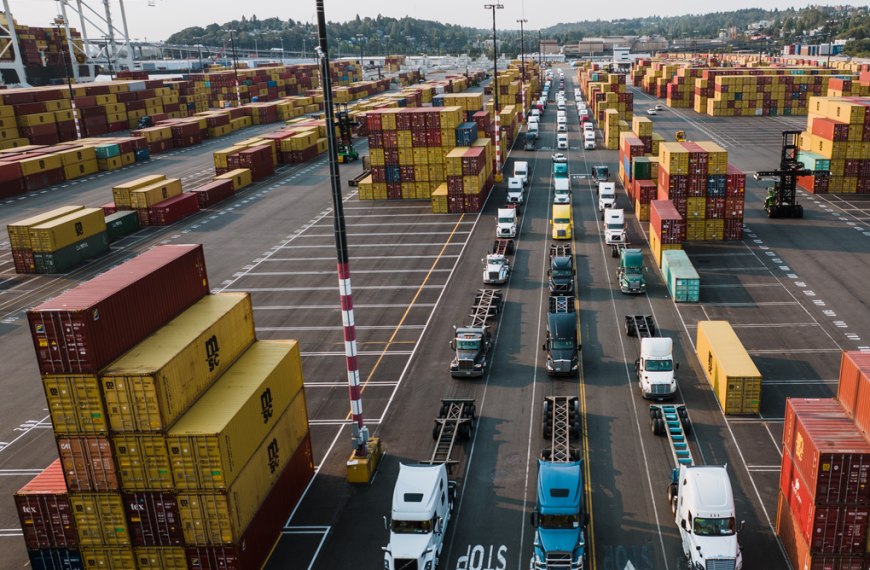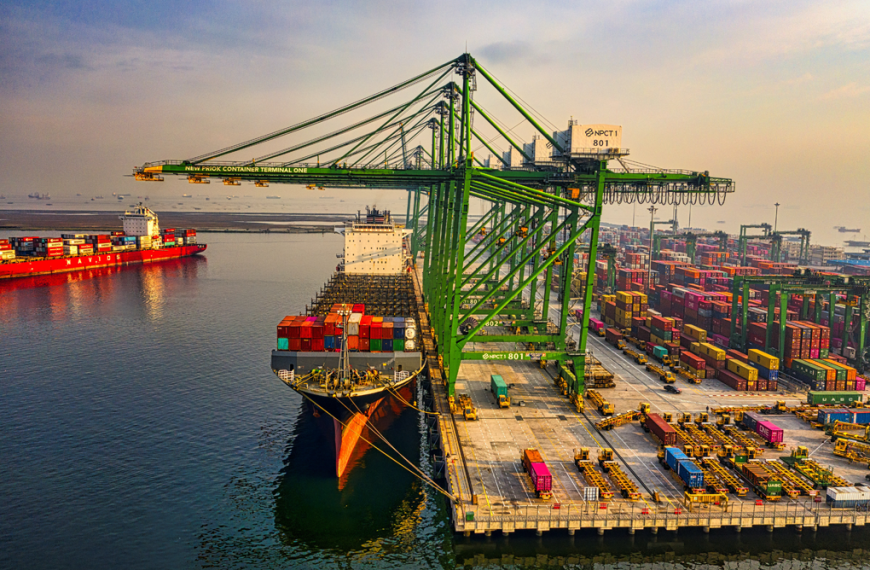Why shippers need to reevaluate their supply chain network design in 2023. Learn the critical components of a successful supply chain.
As the world continues to evolve, businesses face ever-increasing challenges to remain competitive. In today’s fast-paced economy, logistics and freight forwarding are critical components of a successful supply chain. Shippers who want to stay ahead of the curve need to reevaluate their supply chain network design in 2023.
What is Supply Chain Network Design?
Supply chain network design is the process of strategically planning, organizing, and managing the flow of goods, services, and information from the point of origin to the point of consumption. This involves creating an efficient and effective supply chain network that meets the needs of the business, customers, and partners.
Building a Foundation for Efficient Network Design
Building an efficient network design requires a solid foundation. To achieve this, shippers need to consider several factors. First, they need to define their business objectives and understand their customers’ needs. This will help them to identify the right strategies for network design.
Secondly, they need to analyze their current supply chain network and identify areas that need improvement. This includes evaluating the effectiveness of their current network design, identifying bottlenecks, and developing solutions to address them.
Finally, shippers need to create a roadmap for network design that aligns with their business objectives, incorporates customer needs, and leverages technology and innovation to enhance efficiency.
Efficient network design is critical for logistics and freight forwarding companies that want to optimize their supply chain operations. By building a strong foundation for network design, businesses can improve efficiency, reduce costs, and enhance customer satisfaction.

What is Network Design?
Network design is the process of optimizing the transportation network to meet the requirements of the business. This involves determining the most efficient transportation routes, modes of transportation, and carrier partners to ensure timely and cost-effective delivery of goods.
Building a Strong Foundation for Network Design
Building a strong foundation for network design involves several critical components, including:
Understanding the Business Requirements
The first step in building a strong foundation for network design is understanding the business requirements. This involves analyzing the company’s product line, customer base, and distribution channels to determine the optimal transportation network.
Data Collection and Analysis
Data collection and analysis is crucial for efficient network design. This involves collecting data on transportation costs, transit times, carrier performance, and customer service levels. Analyzing this data can help identify areas for improvement and opportunities to optimize the transportation network.
Developing a Transportation Strategy
Developing a transportation strategy involves identifying the optimal transportation routes, modes of transportation, and carrier partners to meet the business requirements. This involves considering factors such as cost, transit time, capacity, and service level agreements.
Partnering with a Reputable Logistics Provider
Partnering with a reputable logistics provider is critical for efficient network design. A logistics provider can provide businesses with access to advanced technology, industry expertise, and carrier relationships. They can also help businesses develop and implement a transportation strategy that meets their specific business requirements.

The Benefits of Efficient Network Design
Efficient network design has several benefits for logistics and freight forwarding companies, including:
- Improved Efficiency: Efficient network design can reduce transportation costs, minimize transit times, and optimize supply chain operations.
- Enhanced Customer Satisfaction: By optimizing the transportation network, businesses can improve delivery times and service levels, leading to better customer satisfaction.
- Reduced Risk: Efficient network design can help reduce the risk of transportation disruptions, such as carrier bankruptcies or natural disasters.
Access Reliable Data to Facilitate Future Planning
In today’s data-driven world, shippers need to have access to reliable data to facilitate future planning. This includes data on market trends, customer behavior, and supply chain performance. This data can be used to make informed decisions about network design, including the location of warehouses, the mode of transportation, and the use of technology.
The Importance of Reliable Shippers Data
Reliable shippers data is essential for businesses that rely on shipping and logistics. It provides critical information about market trends, customer behavior, and supply chain performance, which can help businesses make informed decisions about their operations. This data can be used to identify areas that need improvement, optimize inventory levels, reduce transportation costs, and enhance customer service.
Accessing Reliable Shippers Data
Accessing reliable shippers data is easier than ever before. With advancements in technology, businesses can collect and analyze data from various sources, including transportation management systems, electronic data interchange, and customer relationship management software.
One of the best ways to access reliable shippers data is by partnering with a reputable logistics provider. A logistics provider can help businesses collect and analyze data, identify areas that need improvement, and develop solutions to address them. They can also provide businesses with access to real-time data on shipping and logistics performance, enabling them to make informed decisions about their supply chain.
The Benefits of Reliable Shippers Data
Accessing reliable shippers data has several benefits for businesses that rely on shipping and logistics. These benefits include:
- Improved Visibility: Reliable shippers data provides businesses with improved visibility into their supply chain, allowing them to track shipments in real-time and identify potential issues before they become problems.
- Enhanced Efficiency: By using reliable shippers data, businesses can optimize their supply chain operations, reducing transportation costs, and minimizing lead times.
- Better Customer Service: Reliable shippers data enables businesses to improve their customer service by providing them with accurate information about shipment status and delivery times.
- Improved Decision Making: By using reliable shippers data, businesses can make informed decisions about their supply chain, identifying areas that need improvement and developing solutions to address them.
| Benefits of Reliable Shippers Data | Description |
|---|---|
| Improved Visibility | Provides real-time tracking, enhances supply chain visibility, and helps identify potential issues. |
| Enhanced Efficiency | Optimizes supply chain operations, reduces transportation costs, minimizes lead times, and improves overall efficiency. |
| Better Customer Service | Improves accuracy of shipment status and delivery times, leading to better customer satisfaction. |
| Improved Decision Making | Identifies areas for improvement, enhances data-driven decision-making, and helps make informed decisions about the supply chain. |
Conclusion
In conclusion, accessing reliable shippers data is crucial for businesses that rely on shipping and logistics. It provides critical information about market trends, customer behavior, and supply chain performance, which can help businesses make informed decisions about their operations. By partnering with a reputable logistics provider and using advanced technology, businesses can collect and analyze data, improve visibility, enhance efficiency, improve customer service, and make better decisions about their supply chain.

Strategic Network Design Decisions
Strategic network design decisions are critical to achieving an efficient supply chain network. These decisions include:
- Facility Location: Choosing the right location for warehouses and distribution centers is critical to minimizing transportation costs, reducing lead times, and improving customer service.
- Transportation Mode: Choosing the right transportation mode depends on factors such as distance, volume, and cost. Air, sea, rail, and road transportation all have their advantages and disadvantages.
- Inventory Management: Optimizing inventory levels is critical to minimizing carrying costs while ensuring sufficient stock levels to meet customer demand.
- Technology: Leveraging technology such as automation, robotics, and AI can enhance supply chain efficiency and reduce costs.
Conclusion
In conclusion, reevaluating your supply chain network design in 2023 is critical to staying competitive in today’s fast-paced economy. Building a foundation for efficient network design, accessing reliable data, and making strategic network design decisions are all critical components of a successful supply chain network. By investing in these areas, shippers can enhance their supply chain efficiency, improve customer service, and drive business growth.
Frequently Asked Questions (FAQs)
What are the three types of supply chain designs?
The three types of supply chain designs are agile, lean, and hybrid. Agile supply chain design focuses on flexibility and responsiveness to changes in demand, while lean supply chain design emphasizes reducing waste and maximizing efficiency. A hybrid supply chain design combines elements of both agile and lean supply chain design to create a flexible yet efficient supply chain.
What are the 5 steps of supply chain design?
The 5 steps of supply chain design are:
-Understand business strategy and requirements.
-Define the supply chain network structure.
-Determine inventory policies and locations.
-Design the transportation network.
-Develop the information technology infrastructure.
By following these steps, businesses can design a supply chain that meets their specific needs and requirements
What are the components of supply chain design?
The components of supply chain design include:
Network Design: Determines the optimal transportation routes, modes of transportation, and carrier partners to ensure timely and cost-effective delivery of goods.
Inventory Management: Determines the optimal levels of inventory to minimize costs while ensuring sufficient supply.
Facility Location: Determines the optimal location for warehouses and distribution centers to minimize transportation costs.
Information Technology: Determines the technology infrastructure necessary to support efficient supply chain operations.
By optimizing these components, businesses can design a supply chain that is both efficient and effective.
What are 4 supply chain design characteristics?
The four supply chain design characteristics are:
Responsiveness: The supply chain should be designed to quickly and effectively respond to changes in customer demands, market conditions, and other external factors.
Efficiency: The supply chain should be designed to minimize costs and optimize resource utilization, such as reducing inventory levels, streamlining transportation routes, and improving production processes.
Resilience: The supply chain should be designed to withstand disruptions and recover quickly from unexpected events, such as natural disasters, supplier failures, or market fluctuations.
Flexibility: The supply chain should be designed to adapt to changing business requirements and accommodate variations in product offerings, production volumes, and customer preferences. This includes having the ability to scale up or down production capacity, switch suppliers, or modify distribution channels as needed.













